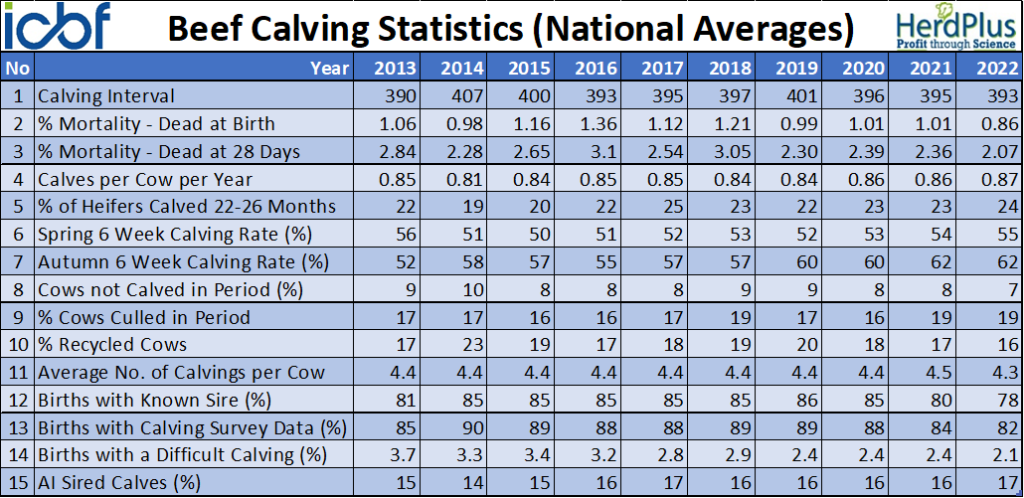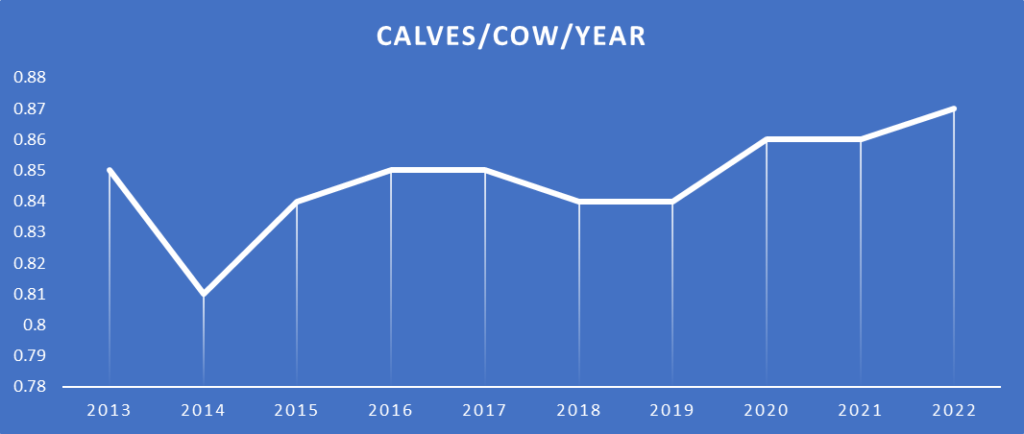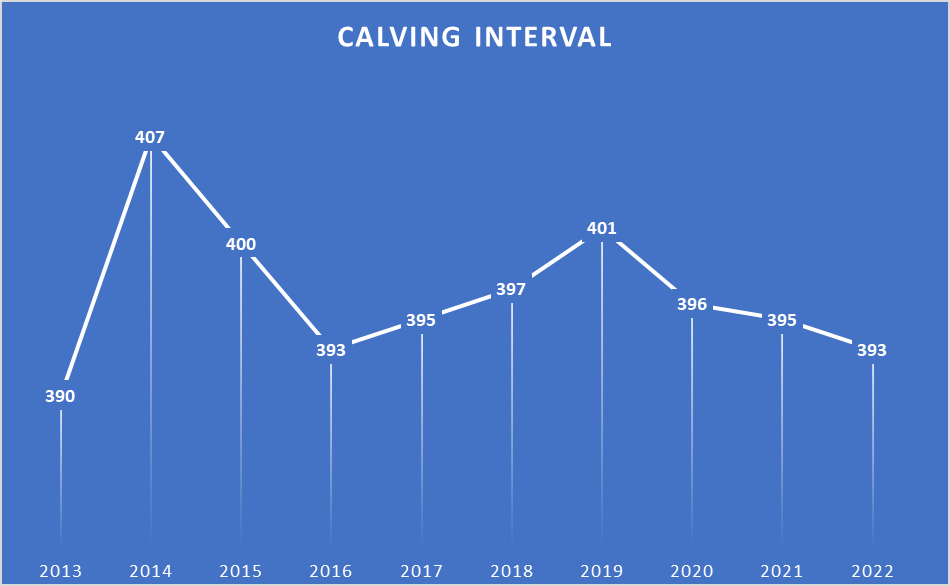The 2022 HerdPlus Beef Calving reports were released recently. This report is designed to give farmers an in depth insight into the reproductive performance of their herds. The calving reports run from mid-year, therefore the 2022 data covers the period from 1st July 2021 to 30th June 2022.
The average calving interval of the national herd has improved by 2 days from 395 days in 2021, to 393 days in 2022. This is the 3rd consecutive year that calving interval has seen year over year improvement.
Positive trends are also apparent one year on for other important fertility parameters such as Spring 6 week calving rate, calves/cow/year and percentage of recycled cows (See Table 1 below). There is a particularly positive trend for both of the Mortality traits as can be seen in Table 1. The National Statistics are based on herds with 10 calvings or more.


While the percentage of heifers calved 22-26 months of age has improved by 1% this year to stand at 24%, there is plenty room for improvement in this KPI. An important aspect of calving beef heifers at 24 months is making sure that they meet target weights. Weighing all cattle is good practice and this is particularly true for replacement heifers. Farmers can do this by using their own scales and subsequently recording weights on the ICBF website, or they can avail of the ICBF technician service. Once heifers are weighed farmers can assess performance levels accurately and see where their heifers stand in relation to targets. The table below gives a simple outline of target weights at different ages, for calving beef heifers at 24 months.

The top 10% of herds had a calving interval of 358 days which equates to a calving interval that is all of 5 weeks greater than the figure for the national herd average of 393 days. This figure is some way behind that of the top 10% and with the calving interval figure for the national herd showing modest to no improvement over the past decade, it has never been so important that we focus our breeding on bulls with a high Eurostar Replacement index with a high fertility sub-index.

Average figures from over the past 5 years indicate that we are moving in the right direction, however year on year there hasn’t been much change to many KPIs, it is important to focus on improving the fertility of the national herd. The decisions made by farmers participating in Beef Data and Genomics Programme will show improvement with more focus on 4 and 5 star replacement breeding stock, the national herd will see improvement to this figure in the future and the trend for future years will show a more positive outcome as a result of this.
A full listing of all the beef statistics can be found on the ICBF Statistics page. If you have any questions on the calving report, the above statistics, or the Euro-Star ratings of animals, please do not hesitate to call ICBF HerdPlus on 023 8820452 or [email protected].
